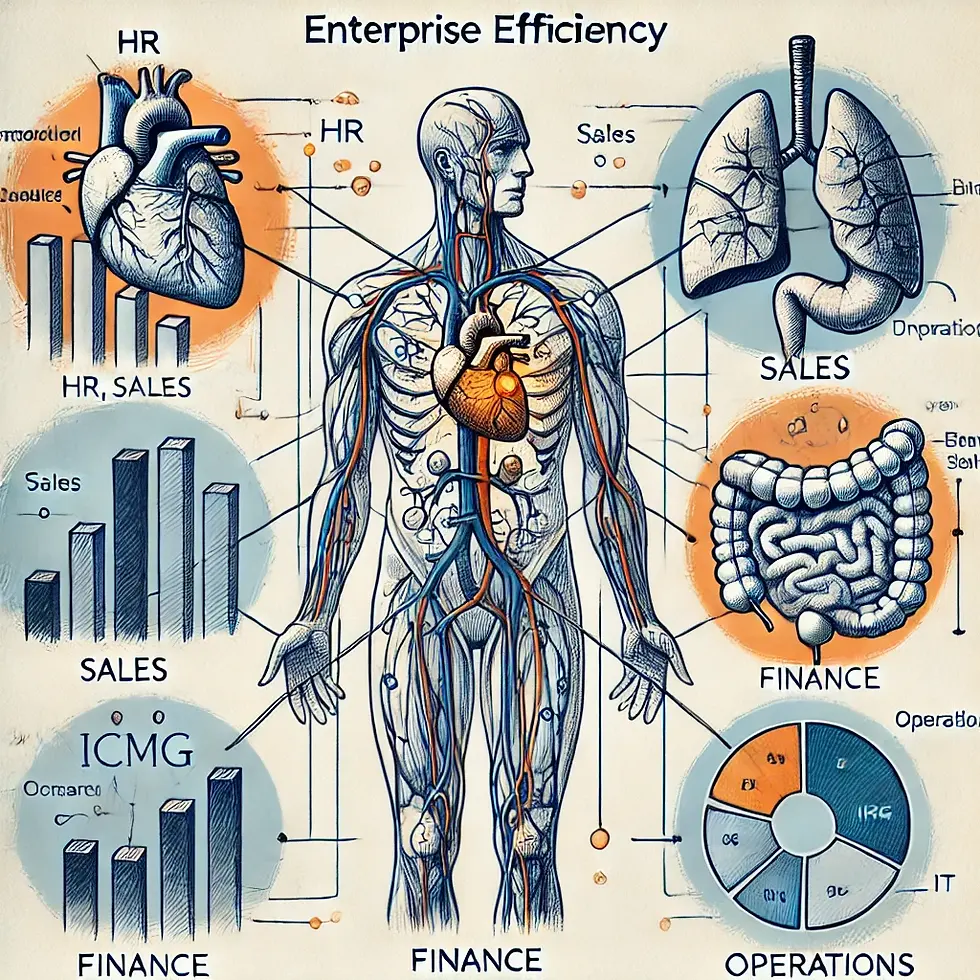Why Every Enterprise Needs a Department of Efficiency
- Sunil Dutt Jha

- Nov 29, 2024
- 3 min read
Updated: Jan 2
In any organization, inefficiencies often lurk beneath the surface—disconnected processes, misaligned goals, and fragmented systems quietly draining resources and hindering success.
These inefficiencies cost enterprises billions each year in wasted time, lost opportunities, and unnecessary expenses.
President-elect Donald Trump’s vision of a Department of Efficiency, designed to cut $2 trillion in government expenses, sheds light on an essential truth: inefficiency is a problem worth solving. For enterprises, this concept has never been more relevant.
What if every organization had its own “Department of Efficiency,” focused on streamlining operations and ensuring alignment with strategic goals?

What Is a Department of Efficiency?
A Department of Efficiency would function as the backbone of the enterprise, identifying and addressing the inefficiencies that often go unnoticed. This department would:
Align Goals Across Departments: Ensure that every team works toward shared strategic objectives, eliminating conflicts and redundancies.
Streamline Processes: Redesign workflows to remove bottlenecks and unnecessary steps, saving time and resources.
Integrate Systems: Connect IT systems and tools to enable seamless data flow and collaboration.
Optimize Resource Allocation: Ensure that people, budgets, and technology are used effectively to achieve enterprise goals.
In essence, the Department of Efficiency would act as the enterprise’s diagnostic and optimization hub, much like a doctor diagnosing and treating systemic issues in the human body.
Want to read more?
Subscribe to architecturerating.com to keep reading this exclusive post.

